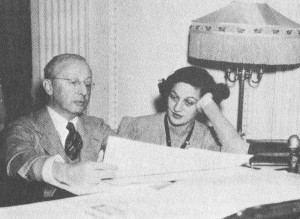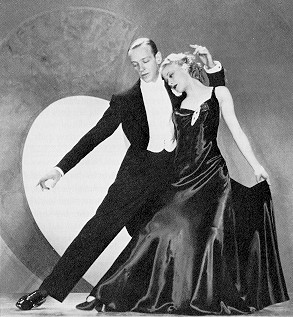Music composed by Jerome Kern has been popular with jazz artists for so long it's hard to imagine how horrified Kern was by the liberties jazz interpreters took with his finely-crafted melodies. In 1924 Kern issued a statement calling jazz interpretations of his songs “fraudulent imitations.” And he demanded that there should be a law to protect musical works. He wrote, “The composer should be able to protect his score just as an author does his manuscript."
This week Riverwalk Jazz takes exception with the wishes of the composer and celebrates Jerome Kern’s music with jazz interpretations of classics including “Smoke Gets In Your Eyes,” “Look for the Silver Lining” and “I Won’t Dance.”
Taking stock of Jerome Kern's place in the history of American musical theater makes his antipathy toward the unruliness of jazz somewhat understandable. Kern belonged to an early generation of New York theater composers. Born in 1885, he was of a different generation from the Broadway composers who embraced jazz in their work. Jerome Kern was 15 years older than George Gershwin and 20 years older than Harold Arlen.

Jerome Kern and Dorothy Fields working in Kern’s Beverly-Wilshire suite. Photo courtesy the Edward Jablonski Collection.
When Kern first began to pitch his compositions to theater producers in New York in 1907, Viennese operetta was the hottest ticket on Broadway. “The Merry Widow” by Franz Lehar was the gold standard. Producers in New York considered European and British songs far better ‘quality’ than any compositions an American could be capable of writing. Jerome Kern’s break-through success in 1914, "They Didn’t Believe Me,” was so fresh and new that it is often regarded as the first distinctly American love song in musical theater.
Jerome Kern was well into middle age when he began to collaborate with the hip, jazzy lyricist Dorothy Fields on songs for Hollywood musicals, including the 1936 hit Swing Time starring Fred Astaire and Ginger Rogers. Steeped in operetta and ‘legitimate’ theater music of an earlier generation, Kern was uncomfortable, at first writing the type of syncopated, jazzy tunes that a ‘Fred and Ginger’ movie called for. The story goes that Astaire spent a couple afternoons dancing for Kern—around Dorothy Fields’ living room—so that the composer could imbibe the feeling of jazz rhythm from Astaire’s tap-dancing feet. It must have helped. The collaboration between Kern and Fields produced a number of brilliant rhythm tunes, including "I Won't Dance” and “A Fine Romance.”
Photo credit for Home Page: Young Jerome Kern, from the book Jerome Kern, His Life and Music.
Text based on Riverwalk Jazz script by Margaret Moos Pick ©2005



